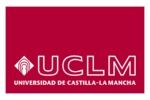Note that allowance for doubtful accounts reduces the overall accounts receivable account, not a specific accounts receivable assigned to a customer. Because it is an estimation, it means the exact account that is (or will become) uncollectible is not yet known. For https://babyuser.ru/bs/gentle-brightening-hair-clarifiers-the-best-means-and-rules-of-use/ example, a customer takes out a $15,000 car loan on August 1, 2018 and is expected to pay the amount in full before December 1, 2018. For the sake of this example, assume that there was no interest charged to the buyer because of the short-term nature or life of the loan.
Percentage of Credit Sales Method
The contra-asset account, an allowance for doubtful accounts, decreases the net value of accounts receivable on the balance sheet. When a specific account is deemed uncollectible, it is written off by debiting the allowance account and crediting accounts https://mkin24.ru/comedyhorror receivable. This adjustment guarantees that the company’s anticipated cash inflows are accurately reflected in the financial statements.
Payment
The risk classification method involves assigning a risk score or risk category to each customer based on criteria—such as payment history, credit score, and industry. The company then uses the historical percentage of uncollectible accounts for each risk category to estimate the allowance for doubtful accounts. Doubtful accounts, also known as bad debt or uncollectible accounts, are accounts receivable that a company believes it may not collect in full or at all.
- The balance sheet aging of receivables method estimates bad debt expenses based on the balance in accounts receivable, but it also considers the uncollectible time period for each account.
- This account balance or this calculated amount will be matched with the sales amount on the income statement.
- The seller’s accounting records now show that the account receivable was paid, making it more likely that the seller might do future business with this customer.
- When a specific customer has been identified as an uncollectibleaccount, the following journal entry would occur.
Matching
It’s important to note that the net AR remains unaffected, and only the remaining allowance for doubtful accounts is reduced from $15,000 to $5,000. Unlike the percentage of sales method, this approach factors in both payment due dates and the duration for which they’ve been pending. Days Sales Outstanding (DSO) is used with windows, like 0-30 days, days, and days, are considered. Now, let’s dive deeper into how allowance for uncollectible accounts works with a practical example.
Payments
This can be done by reviewing historical data, such as customer payment patterns and trends in industry-specific metrics. The allowance for doubtful accounts is a contra asset account, and so is listed as a deduction immediately below the accounts receivable line item in the balance sheet. It may be aggregated into the accounts receivable line item, whereby it is not stated separately. Units should consider using an allowance for doubtful accounts when they are regularly providing goods or services “on credit” and have experience with the collectability of those accounts. The following entry should be done in accordance with your revenue and reporting cycles (recording the expense in the same reporting period as the revenue is earned), but at a minimum, annually.
HighRadius Named an IDC MarketScape Leader for the Second Time in a Row For AR
- Explore the components, estimation methods, and financial impact of the allowance for doubtful accounts in this comprehensive guide.
- This can only be done by businesses operating under an accounting method called Accrual Accounting.
- This is different from the last journal entry, where bad debt was estimated at $58,097.
- Companies in industries with higher credit risk or longer collection cycles generally have higher allowances for doubtful accounts.
- With both methods, the bad debt expense needs to record in the income statement by a different time.
If this is your first time recording the allowance, you simply debit your bad debt expense account and credit your allowance account for the same amount. But what happens if your allowance for doubtful accounts already has an account balance? In that case, your adjusting entry will just be the difference between what’s currently on the books and the allowance amount. It records the 1% of projected bad debts as a $100,000 debit to the Bad Debt Expense account and a $100,000 credit to the Allowance for Doubtful Accounts. The bad debt expense required is recorded with the following aging of accounts receivable method journal entry. In applying the percentage-of-sales method, companies annually review the percentage of uncollectible accounts that resulted from the previous year’s http://www.roaring-girl.com/work/the-social-model-2/ sales.
It also helps in aligning the financial statements with the matching principle, ensuring that revenues and related expenses are recorded in the same period. Based on this calculation the allowance method estimates that, of the credit sales of 65,000, an amount of 1,625 will become uncollectible at some point in the future. Using the allowance method, complying with the matching principle, the amount is recorded in the current accounting period with the following percentage of credit sales method journal.



